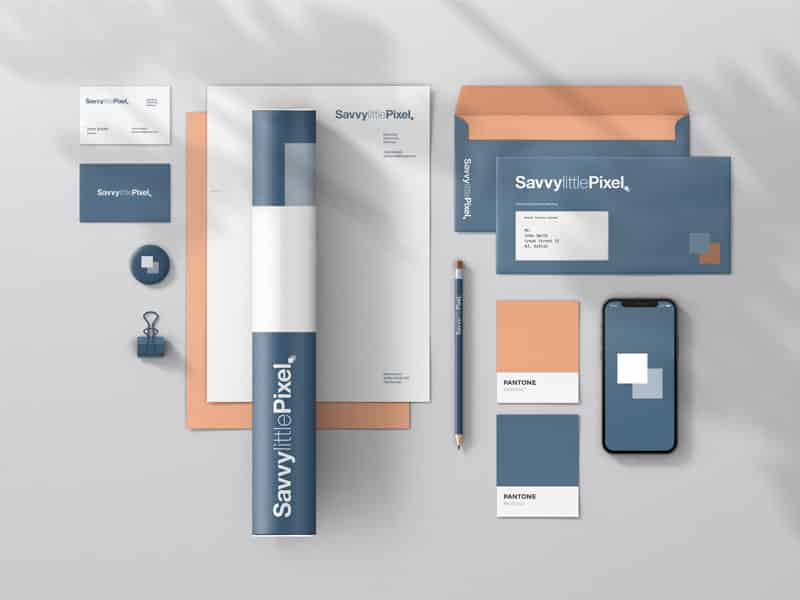Brand identity means many things to many people. A lot of marketers think that brand identity is all about creating a logo for a business, and nothing more.
However, brand identity is much more than just a nice logo. It’s about all the elements that come together that make your brand what it is and help distinguish your business in your customer’s minds.
Join us as we look at what brand identity consists of, and how you can design a brand identity that resonates with your customers.
Table of Contents
Spot the differences?
Brand and brand identity are often used interchangeably, but they refer to two different things.
Brand
Brand (or branding) refers to the emotional response that a person has to a company and the products and services they sell.
Marketing genius Seth Godin defined a brand as:
‘The set of expectations, memories, stories, and relationships that, taken together, account for a consumer’s decision to choose one product or service over another.’
Think of Apple, currently one of the world’s most valuable brands. The tech company uses exclusivity and innovation to promote its brand, making people feel good about buying its products.
Brand Identity
While brand refers to concepts, brand identity is all about the visual elements that can be used to represent a company.
This not just includes the logo and name but everything from the tone of voice used in blogs, the website’s color scheme, and the font size used on business cards.
Let’s go back to Apple. You have the infamous Apple logo, the sleek packaging, and the tagline: ‘Think differently.’ All these elements come together to help promote the business to new and existing customers.
Famous art director Paul Rand once said: ‘Design is the silent ambassador of your brand.’ All the elements of your brand identity come together to quietly promote your business to brand new audiences.
How to create a show-stopping brand identity
You may now be wondering how to create a visual identity that will make your customers open their hearts to you, as well as their wallets.

There are three simple steps to creating a great brand identity:
- Research
- Identity
- Monitoring
Let’s take a look at the three different stages.
Step 1: Research
This is the most critical part of the process as it will guide the rest of the project. Don’t be afraid to take your time and be thorough.
Here are some of the questions you will need to ask:
- Who is your target audience? Where do they live? How old are they? What are their hobbies? Most importantly, what problems do they have that your product or service can solve?
- What is the positioning statement of your brand? A positioning statement is a brief description of your product or service and how it relieves the pain points of your customers
- What are your values and beliefs? How do you want your product or service to help change the world?
- What is your heritage? By this, we mean the history of your brand and how your products (and to a lesser extent, services) have been created
- Who are your competitors, and how do you want your brand to be perceived against them? For example, take Virgin Atlantic and British Airways. While British Airways is formal, reliable, and traditional, Virgin Atlantic is seen as fun, exciting and modern. Two similar services, two hugely different brand perceptions
If the brand identity project is bigger than one designer, we recommend having a design brief. This will summarise your research and ensure that everyone involved in the project is on the same wavelength.
Step 2: Identity
Once you’ve done your research, it’s time for the fun part! Designing the various aspects of your brand identity.
Sometimes the best place to start is with the logo. Even the most straightforward logos can take weeks to create and go through hundreds of revisions. Art director Paul Rand admitted that some of his most iconic logos took him a year to come up with.
The HubSpot blog has a great article about the different iterations of the Google logo. Larry Page and Sergey Brin worked with Ruth Kedar to design some prototypes until they got to the version we know and love today.

After the logo, you can create an identity system – this uses the logo to create the rest of your brand identity. For example, your logo might dictate your color scheme, typography, and even your tone of voice.
The next step is to put your brand identity into writing – your style guide. This tells employees and third parties (for example, web developers and PR agencies) how to use your brand identity in order to ensure consistency.
We love looking at other businesses’ style guides – here are some of our favorites.
A special mention to NASA – their style guide is nearly 50 years old and still in use today!
Step 3: Monitoring
So you’ve done your research, signed off your style guide, and you’re ready to launch! What comes next?
Think of your brand identity as a living, breathing being. This means it’s essential to keep an eye on it and make changes if your target audience changes, your values change, or the market evolves.
If you feel the need to rebrand, it’s important to ensure familiarity and consistency so your customers will stay loyal.

Take, for example, Gap’s infamous rebrand a decade ago. Gap changed its logo only for customers to complain that it made the clothing brand feel cheap and plain. In fact, its target audience hated the change so much; Gap was forced to go back to the old logo a week later.
In Conclusion
We hope this article has given you more of an insight into a brand identity and how you can create one for your business.
If we have to offer one key takeaway – take your time. Your brand identity will be what endears customers to your business and can make all the difference between being successful and struggling in the market.
If you would like to further your knowledge on Branding, we have an awesome article here, that covers everything you need to know.
